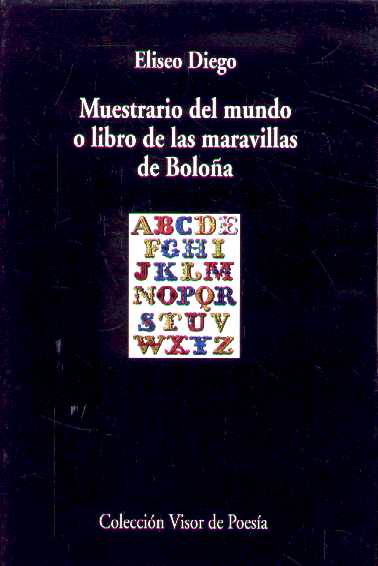4.1.2.7.4 “World Sampler or Book of the Wonders of Bologna”, 1968, Eliseo Diego (1920 – 1994)

“Sample Book of the World or Book of the Wonders of Bologna” is a text in which Eliseo Diego manages to capture the multiplicity of reality in minimal sketches. Creatures of reality and pure figurations parade and contribute with diverse tones to weave a poetic narrative that fully transcends its circumstances and the very context of that city.
The style here reaches its peak of sobriety and lyrical concentration, the surroundings and experiences play a central role but through a process that is not one of filtering but of transmutation, even if it is in reverse, to imbue the beauty that already exists.
What could be called pristine themes of his poetry also survive in the pages of this notebook, the fleetingness of life in its walk towards death and this in its naked, inescapable condition, concomitant also with nothingness, are themes that permeate the atmospheres of the book but no longer as obsessions because in some way Eliseo Diego erects a poetic cosmos resistant to the vicissitudes of being and non-being.
One of the poems that demonstrates this interweaving of the immediate and fiction, not to capture reality but to enrich it with new possibilities, is the poem entitled “Pilgrim,” in which the motif of travel comes to symbolize all of life and returns to the interplay of light and shadow that had been the compositional basis of some of the texts in his earlier notebooks. The text is cited in “History of Cuban Literature”:
“Between civil rocks, precipices
of secular stone, of sacred marble,
pilgrim you leave like the twilight
and your poor belongings: fears, sorrows.
From where to where you are going –from the impassive
artificial, human nature
heading towards the other, immemorial, foreign.
There is nothing for you but walking in the dark.”
In the section titled “Unique and Curious Book of Chess,” one can appreciate the aesthetic care with which Eliseo Diego captures his perceptions, which are as much a reflection of reality as of inner experience. The book also includes two narrative pieces, “A Warehouse Like Any Other” and “The Story of the Antiquarian,” in which he follows a narrative line that occasionally veers toward the truly lyrical, as in many of his works of this nature. Overall, the collection’s structure reveals a holistic approach that other writers lacked at the time.








